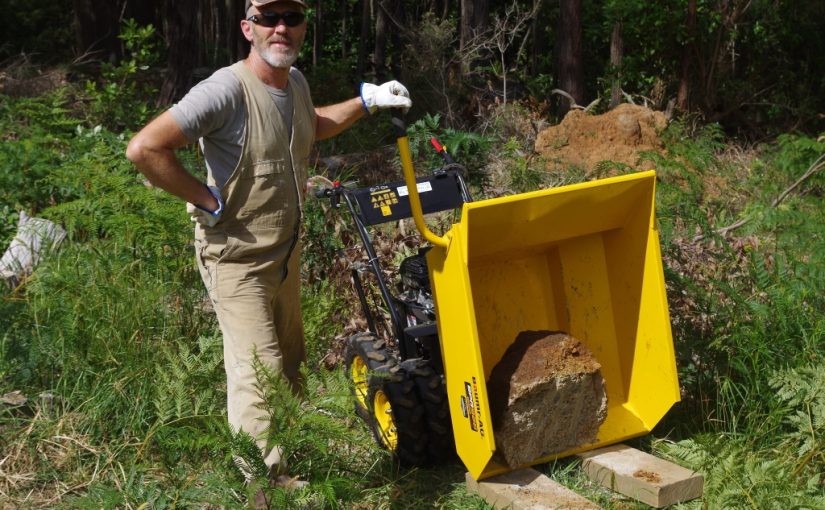Normal summer weather has finally arrived. About time. Hot days, warm nights, and the plants are finally growing. Ordinarily I sleep like the dead. The eyes close, only to awaken for unusual noises, and of course the outrage which is the dreaded alarm. Tinkle, tinkle goes the alarm. Go away you rotten device, surely it can’t be morning yet? Alas, the sun is shining and the birds are praising the fine and lovely morning. Nice for some.
Where’s that coffee? Ah, that’s better. Morning life does go better with coffee. After many years, Sandra knows to leave me alone in the morning. If possible I’ll bring her coffee in bed which she can enjoy with a book. Very occasionally the coffee is accompanied by half a muffin. It all sounds very nice, but my secret plan is to keep her out of the kitchen so that the morning world can come slowly into focus without too many other demands upon my brain.
The other night was quite warm. A minimum overnight temperature of 26’C / 79’F and the inside of the house was not spared the heat. The house design works by capturing the normally cooler overnight mountain air, which we allow in at night. Heavy insulation and shading from verandas keeps then keeps the captured cool air during the much hotter summer day times. Rinse and repeat, so the process goes each hot day. We manually manage the house temperature that way, and most days of the year, it just works. During winter, the insulation works in reverse so as to keep the heat from the firebox trapped inside the house. It’s a simple system, and simple usually works.
That other night, I broke my usual sleep pattern and lay awake thinking upon a problem. Every now and then it doesn’t hurt to get some quiet time that way, and some problems require a lot of thinking time. During a recent inspection of the solar power system, I had noticed that a couple of the battery terminals were far hotter than they should ever be. If you’re going to worry about something, it should be worth worrying about, and that is the case here.
I’m something of an old school tech geek from way back. The few hours of quiet reflection time in the middle of the night were used to work my way through the possible causes of the problem. Turns out, there can be plenty of different reasons why the battery terminals are running far hotter than they should be. None of the reasons are any good.
After I’d taken the problem as far as I could in those dark hours, I went back to sleep.
The next morning, we headed off to visit the nearest electronics store which was open on Boxing Day (Jaycar Electronics, thanks dudes!) We picked up enough cable to replace all of the battery connector cables. Those are nothing fancy, just heavy duty cables which link one battery to the other. It was possible that one or more of the original battery connector cables were faulty.
In the warm afternoon of Boxing Day, I made up brand new heavy duty battery cables, then installed them. Congratulating myself on a job well done, we tested the system and it appeared to be working fine. Except I noticed that I was unable to really tighten the cables onto the battery terminals. That’s not meant to happen.
Metal battery terminals are secured to the battery box with epoxy so that you can really tighten the cables down hard. You need to, because any loose connections turn electricity into heat, and so there you go, that’s what the caused the heat problem. It was a shame I hadn’t noticed this problem whilst the batteries were covered by warranty. They aren’t far out of warranty.
In the remote chance that the distributor of the batteries gave a crap, I contacted them to alert them to the troubles I was having. The reply received didn’t fill me with confidence. Oh well, they are out of warranty and that’s what you get. What they’ll get in return, is a nice friendly email thanking them for the reply and describing how I intend to tear down the battery and rectify the issue whilst making a video of it for public consumption. As an old school tech geek, I can do that. If I’m not mistaken, people do tend to watch reviews before spending mad cash on large purchases. I wonder if it will take the distributor long to reply?
Regardless of the outcome, the batteries do need to have this problem corrected, and soon. It’s a serious fire risk. Depending upon what happens with the battery distributor, in the short term we’ll make a quick fix. In the medium term replacement parts are on order from the land of stuff, although they won’t arrive any time soon. In the longer term, I now wonder if these new batteries will last even as long as the original lead acid (old school) batteries. Dunno.

It wasn’t all batteries this week. The suddenly warmer summer weather meant that the firewood pile warmed and dried. That’s the time to put the stuff away into a shed so that it avoids further rain prior to being used next winter. Damp firewood makes for very poor combustion and will damage your steel heater, not to mention clog up flues with all manner of nasty chemicals. We spent three mornings hauling and stacking the stuff in the firewood shed.
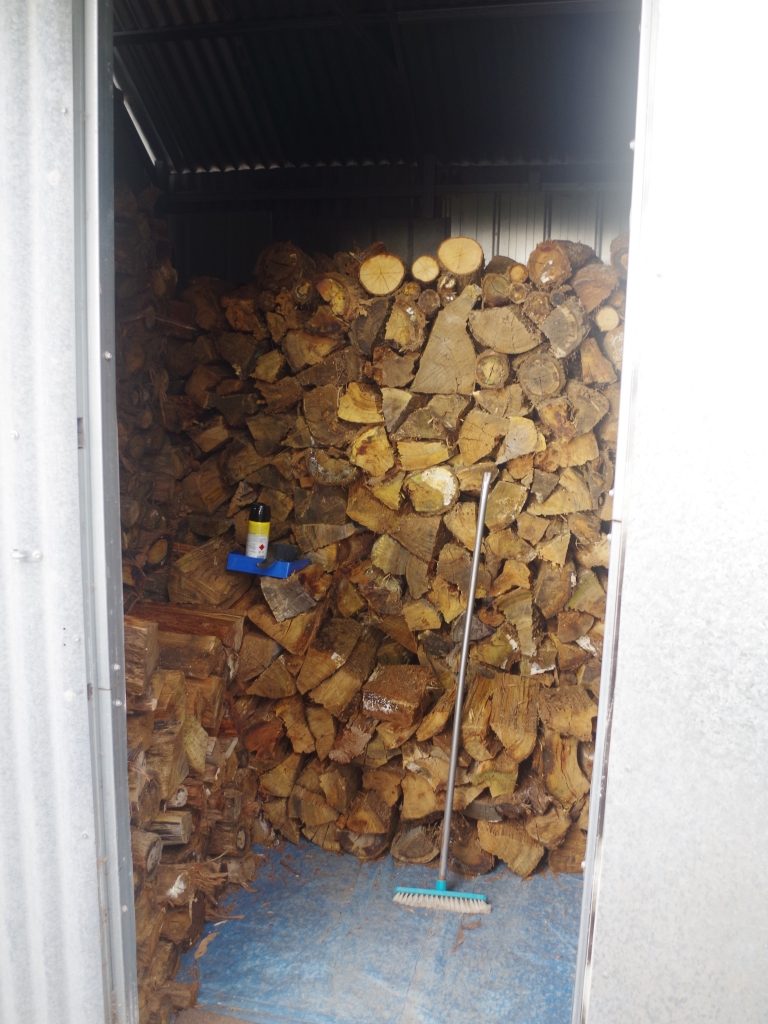
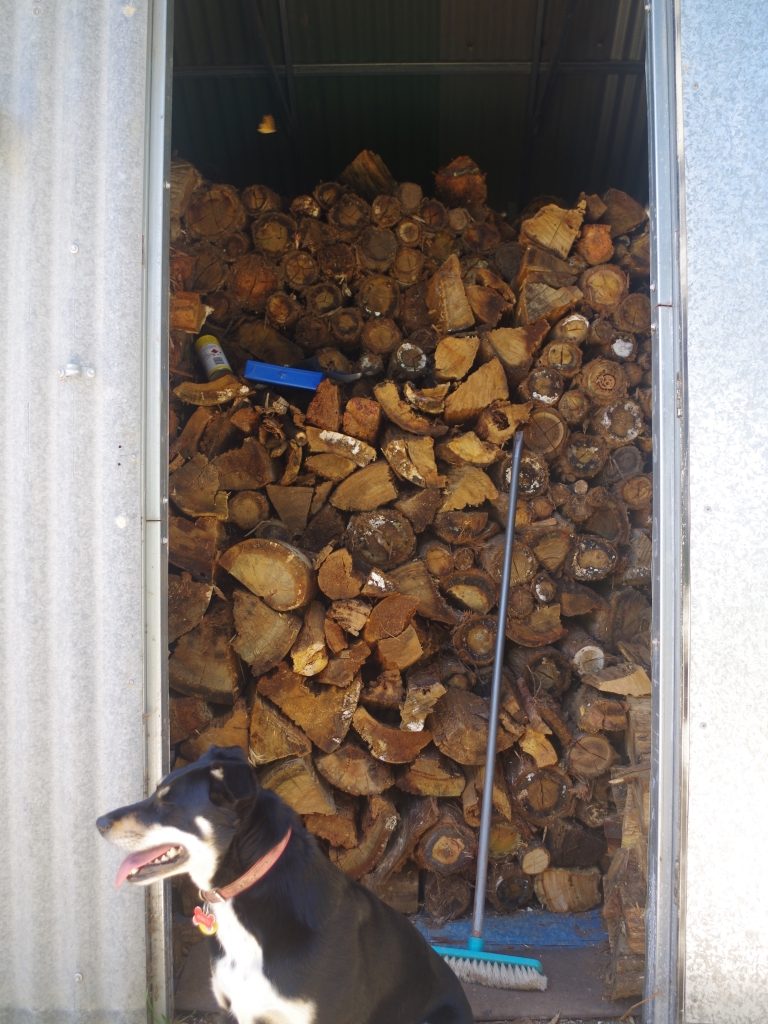
Peak rocks is real! We’ve mostly run out of easy to get at and move large rocks. And plenty of them are needed for the new low gradient ramp project. Fortunately, we haven’t run out of much larger but hard to move rocks because those can be split.
We split a few much larger rocks this week, and thought that readers would find the process to be interesting. As a process it is not that different from what the ancient Romans used to do, we just have better tools than them (not to mention the camera).
The first step in the process is drilling holes in the rock along the line you wish to split.
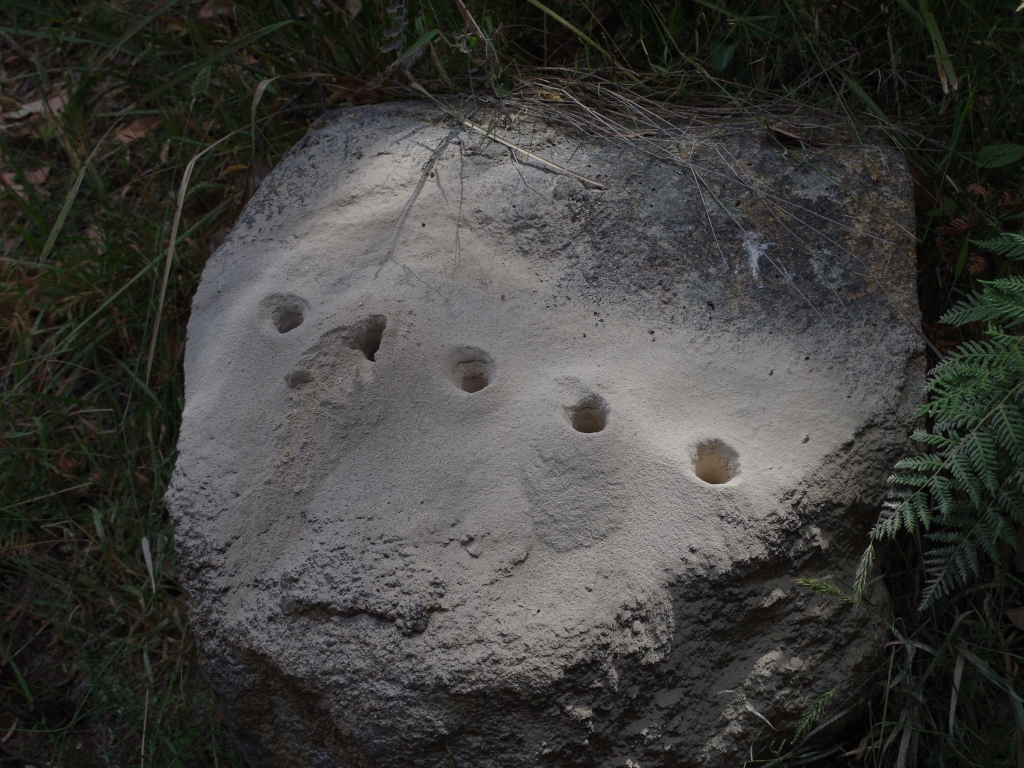
We then use the electric jackhammer with several rock breaking bits (they’re tapered down to a point). In order to break an even line, the jackhammer is driven into a hole a small distance, then the same process is repeated for the next hole in the row. Each bit goes a little bit deeper into the rock, but in series.

It doesn’t take long before the rock begins to crack along the line.
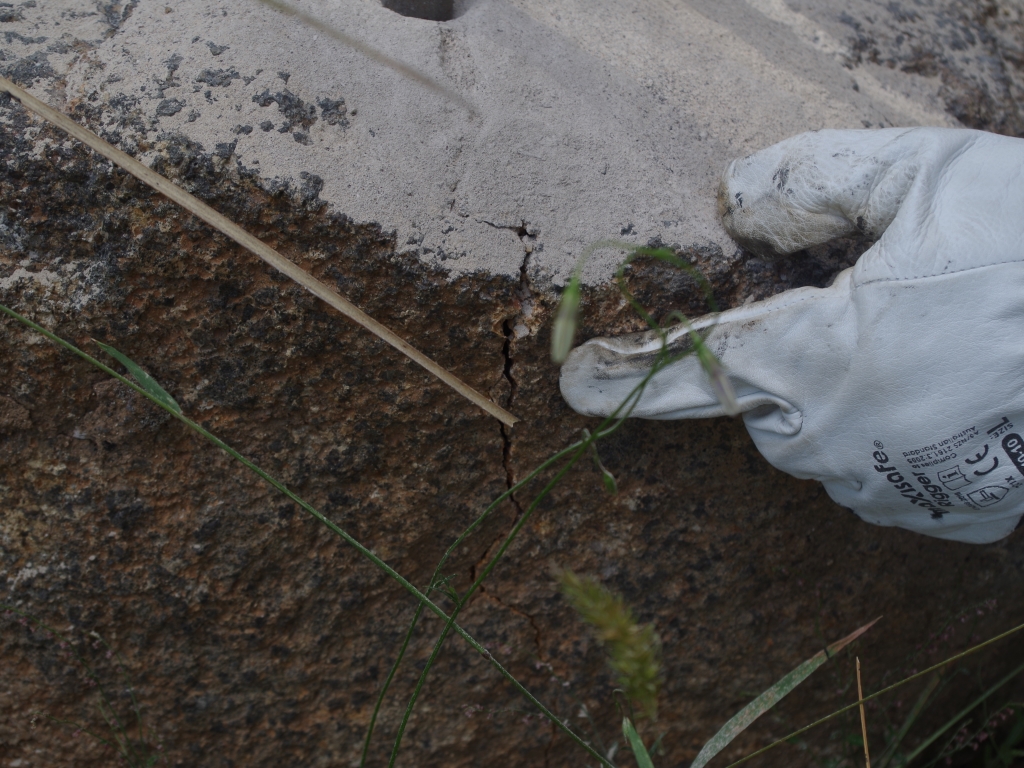
Once the crack has formed, it is a very quick process to then entirely split the rock using the jackhammer. One way too large rock, then becomes three still large, but now moveable rocks. Peak rocks is avoided, but at considerable expenditure of energy and capital.
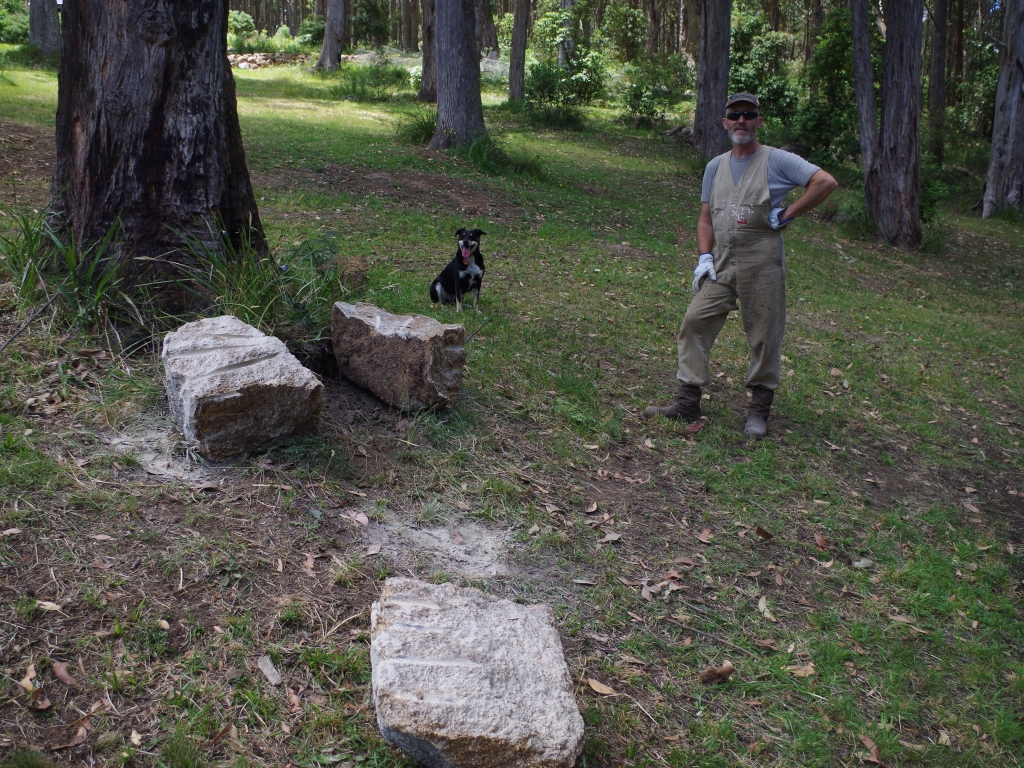
The yellow power wheelbarrow is then used to move the rocks. We roll the rocks onto timber sleepers, and from there into the bucket of the wheelbarrow. The timber sleepers make the job easier by raising the heavy rock off the ground. It’s not a great difference in height, but it sure makes a huge difference. The bucket is on a pivot which gets tipped back and then locked into place.
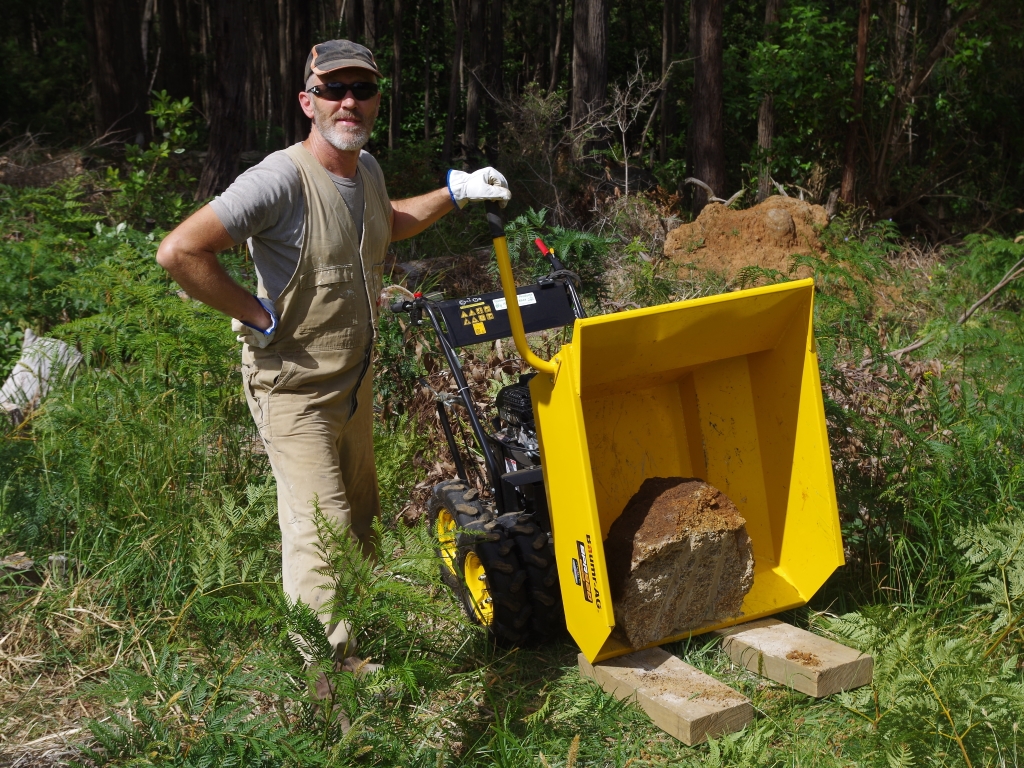
The power wheelbarrow can haul loads of 500kg / 1,100 pounds, and the whilst rocks are heavy, they’re not that heavy. The machine slowly crawls back up the hill with the rock. It would be very difficult to move the heavy rocks back up the hill without the machine. Not impossible, just very difficult.
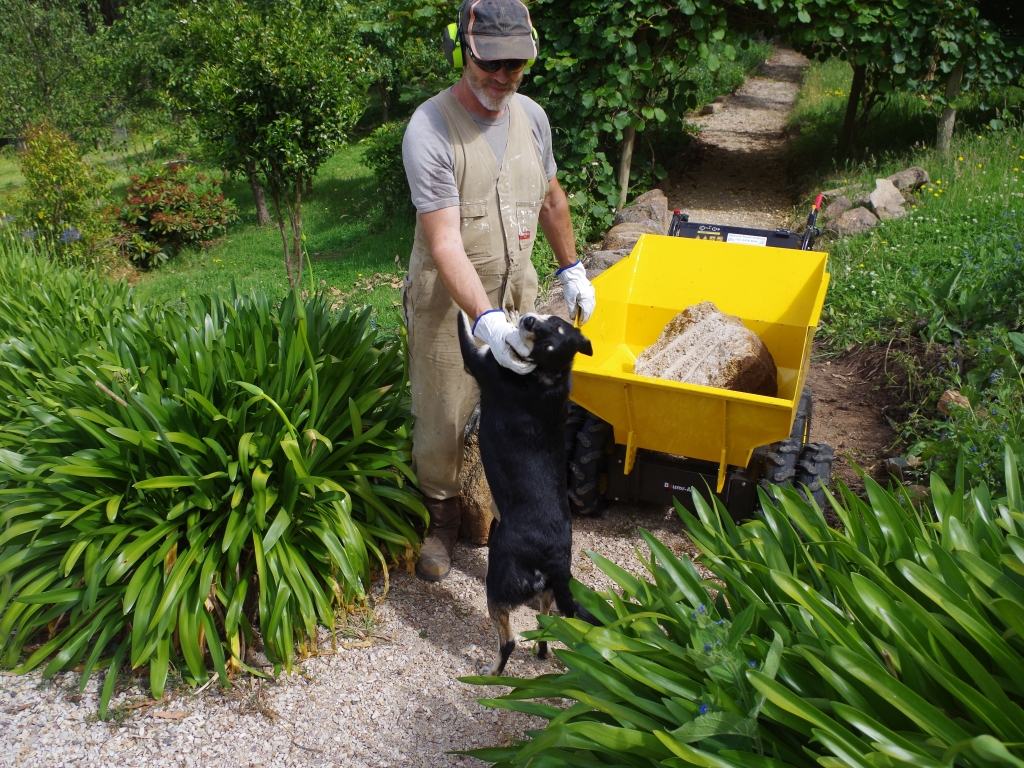
The rocks are manoeuvred into place using a six foot steel house wrecking bar.
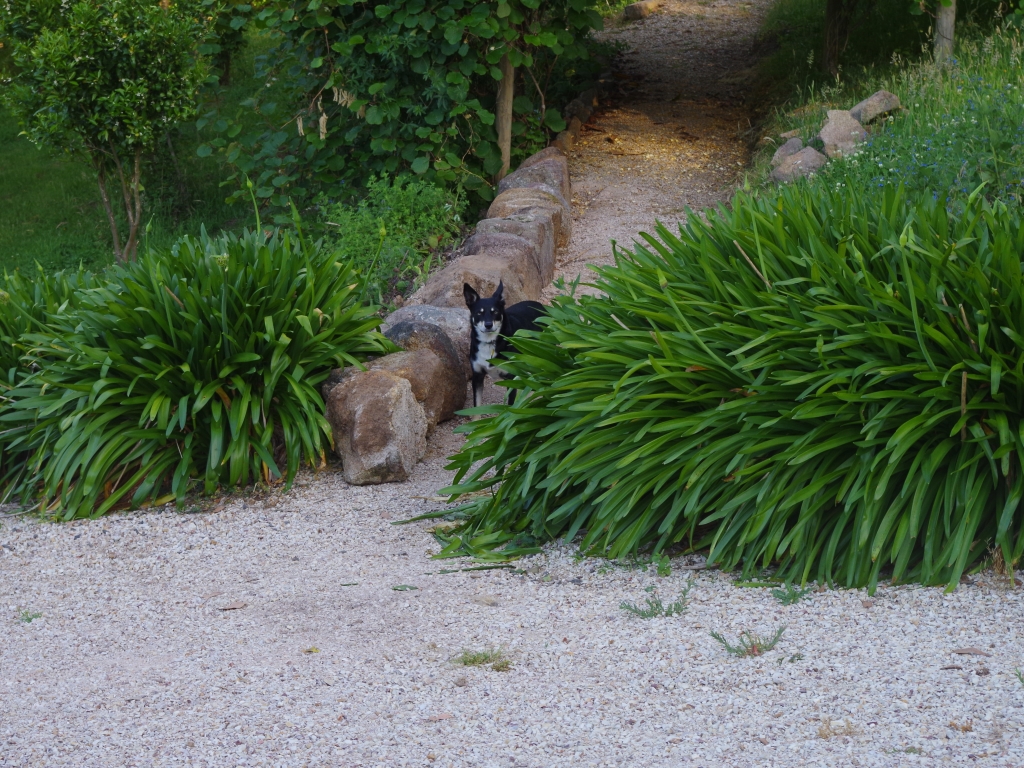
The wildlife is appreciating the break in the rain, even the tree frogs. Those cheeky scamps hang off the side of the house at night eating any spiders and other insects they find. All power to the them!

The warmer weather has begun the process of ripening the blackberries. We grow thornless varieties (Chester and Waldo) and the berries are used for fresh eating and jam.

I’m not sure about the grape vines. We have ten vines and over the past few years we’ve trained them up onto the growing supports. Last year only one plant produced any grapes, whilst this year most of the vines have done so. It’s still only early days for the grapes.

Onto the flowers:




The temperature outside now at about 8am is 22’C (72’F). So far this year there has been 0.0mm (0.0 inches). Last year there was 1,416.6mm (55.8 inches) which was the second wettest year since records began almost 150 years ago.
